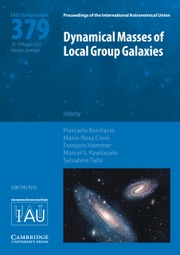Article contents
3D MHD simulations of subsurface convection in OB stars
Published online by Cambridge University Press: 12 July 2011
Abstract
During their main sequence evolution, massive stars can develop convective regions very close to their surface. These regions are caused by an opacity peak associated with iron ionization. Cantiello et al. (2009) found a possible connection between the presence of sub-photospheric convective motions and small scale stochastic velocities in the photosphere of early-type stars. This supports a physical mechanism where microturbulence is caused by waves that are triggered by subsurface convection zones. They further suggest that clumping in the inner parts of the winds of OB stars could be related to subsurface convection, and that the convective layers may also be responsible for stochastic excitation of non-radial pulsations. Furthermore, magnetic fields produced in the iron convection zone could appear at the surface of such massive stars. Therefore subsurface convection could be responsible for the occurrence of observable phenomena such as line profile variability and discrete absorption components. These phenomena have been observed for decades, but still evade a clear theoretical explanation. Here we present preliminary results from 3D MHD simulations of such subsurface convection.
Keywords
- Type
- Contributed Papers
- Information
- Copyright
- Copyright © International Astronomical Union 2011
References
- 7
- Cited by


